As Russian troops approach Pokrovsk, fear mounts over a possible loss of what had long been a key logistic hub tucked away in safety in Donetsk Oblast.
The war has arrived in Pokrovsk, once home to 60,000 people, with the Russians estimated to be about eight kilometers away. Thousands are fleeing the city each week. Russian artillery and FPV drones can now reach Pokrovsk, already affecting the city’s capacity as a logistic hub for the Ukrainian army, experts say.
Russian troops have begun a new push below Pokrovsk to solidify the southern flank and build the base for a further offensive on the city, according to Western and Ukrainian military analysts interviewed.
Ukraine’s manpower shortage and tactical errors have led to a grinding Russian advance toward Pokrovsk, analysts told the Kyiv Independent. But the analysts are skeptical of a Russian breakthrough further east even if the city falls, as its capture would require significant resources that would likely deplete Russia’s offensive capability, they explained.
“(Russia potentially) capturing Pokrovsk will complicate logistics and be a PR blow to Ukrainians, but I don’t think that it’s going to influence the battlefield on a large scale significantly,” said Konrad Muzyka, director of Poland-based Rochan military consultancy.
“Capturing Pokrovsk could lead to bigger losses only if they are further compounded by lack of manpower, lack of artillery munitions, mistakes in command and control, and so on and so forth,” he added.

The Ukrainian army’s traditional issues have been consistent throughout the war: lack of manpower, artillery ammunition, and fortification. Should Russian troops capture Pokrovsk, Kyiv’s ability to take a stand on its issue would be a defining factor in preventing a deeper Russian penetration into the remaining Ukrainian-controlled part of Donetsk Oblast.
Russia has always strived to capture higher ground like Pokrovsk, from where they can operate drones and conduct artillery strikes, but “we have to remember that Russia has been pretty bad when it comes to conducting large-scale operations,” Muzyka said.
“So while they progress tactically, they are unable to convert these tactical victories into operational-level breakthroughs,” he added.
Located less than 20 kilometers east from the neighboring Dnipropetrovsk Oblast, Pokrovsk is home to a railway station and serves as an entry point into the Donbas from cities westward, including Dnipro. The T0504 highway passes through the city, a key logistic artery for Ukrainian soldiers driving between Pokrovsk and the upper parts of Donetsk Oblast – such as Kramatorsk and Sloviansk – until Russian troops came dangerously close to the road this Spring.
"(Pokrovsk's) loss as a supply base and an important crossroad of movement is very unfortunate and will hurt a lot,” Pasi Paroinen from the Finland-based OSINT Group Black Bird Group said.
“But if the situation can be otherwise stabilized, that the Russians don't just freely move forward, at the pace that they have been advancing now or even faster… in that case, it doesn't really matter that you lost a few villages here and there or maybe lost Pokrovsk.”
The analyst said that he worries “the situation is not under (Ukrainians’) control” in the Pokrovsk sector, and “getting it back under control will require more and more resources each day.”
“The further the Russians advance, the more they unlock the entire front line to move, the more resources it will take for the Ukrainians to contain,” Paroinen told the Kyiv Independent.

Russia ‘increasing its forces’ in Pokrovsk sector
Kyiv has acknowledged the powerful thrust of the Russian offensive toward Pokrovsk. Ukraine’s President Volodymyr Zelensky warned in July that Moscow was "throwing everything they have” in the Pokrovsk direction. But he claimed that the Russian advance toward Pokrovsk had slowed down since Ukraine launched a surprise incursion into Russia’s Kursk Oblast in an attempt to divert Russian troops.
Contrary to the president’s claim, Commander-in-Chief of Ukraine’s Armed Forces Oleksandr Syrskyi acknowledged that despite over 30,000 Russian soldiers being transferred to Kursk Oblast from other fronts, Russia “is only increasing its forces” in the Pokrovsk sector.
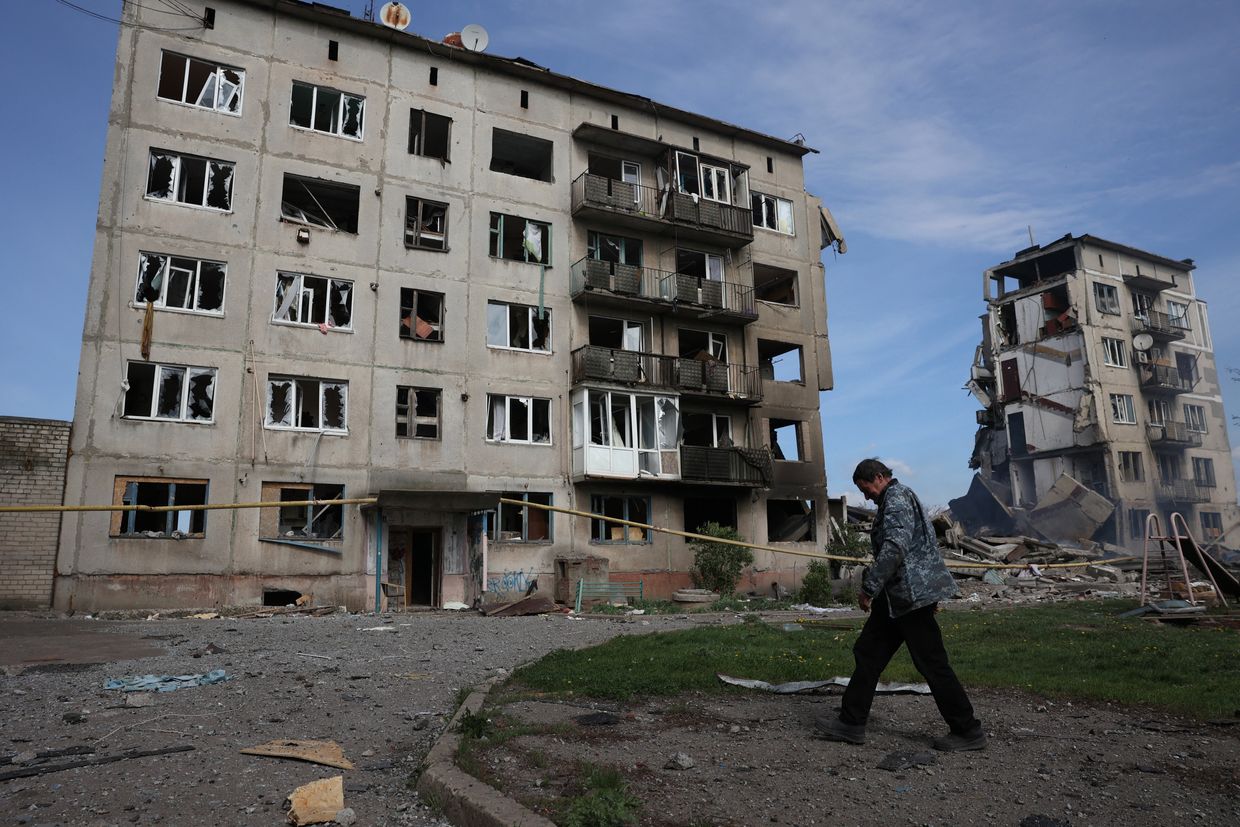
For the Kremlin, the capture of Pokrovsk would be a political conquest similar to Bakhmut and Avdiivka in 2023 and early 2024, according to Ukrainian political analyst Volodymyr Fesenko, a regular talking head on Ukrainian state TV. He denied that there was political meaning tied to Pokrovsk, downplaying it as one of many cities in Donetsk Oblast.
Analysts mostly say that the Russian offensive will continue at the same pace for the foreseeable future. Moscow’s troops were still accelerating their advance toward Pokrovsk over the past week, even though "the rate of advance is likely to slow as Russian ground forces enter Pokrovsk's built-up areas,” the U.K. Defense Ministry said in a Sept. 1 intelligence briefing.
Ukraine’s ability to tackle its manpower and ammunition shortages will determine Pokrovsk's fate, which in turn will depend on Kyiv's priorities. Losing the city would be a logistical blow for Ukraine, threatening the defense of other Donbas cities.
“Each approach to warfare or a strategic decision is going to have an impact on the situation on the front line,” Polish military analyst Muzyka said. “Now Ukraine needs to adapt to the current situation, try to stall the Russians in Donetsk (Oblast).”
“But it's absolutely clear that the situation in Kursk (Oblast) is eating up a lot of resources that Ukraine would otherwise be able to send to Donetsk Oblast.”
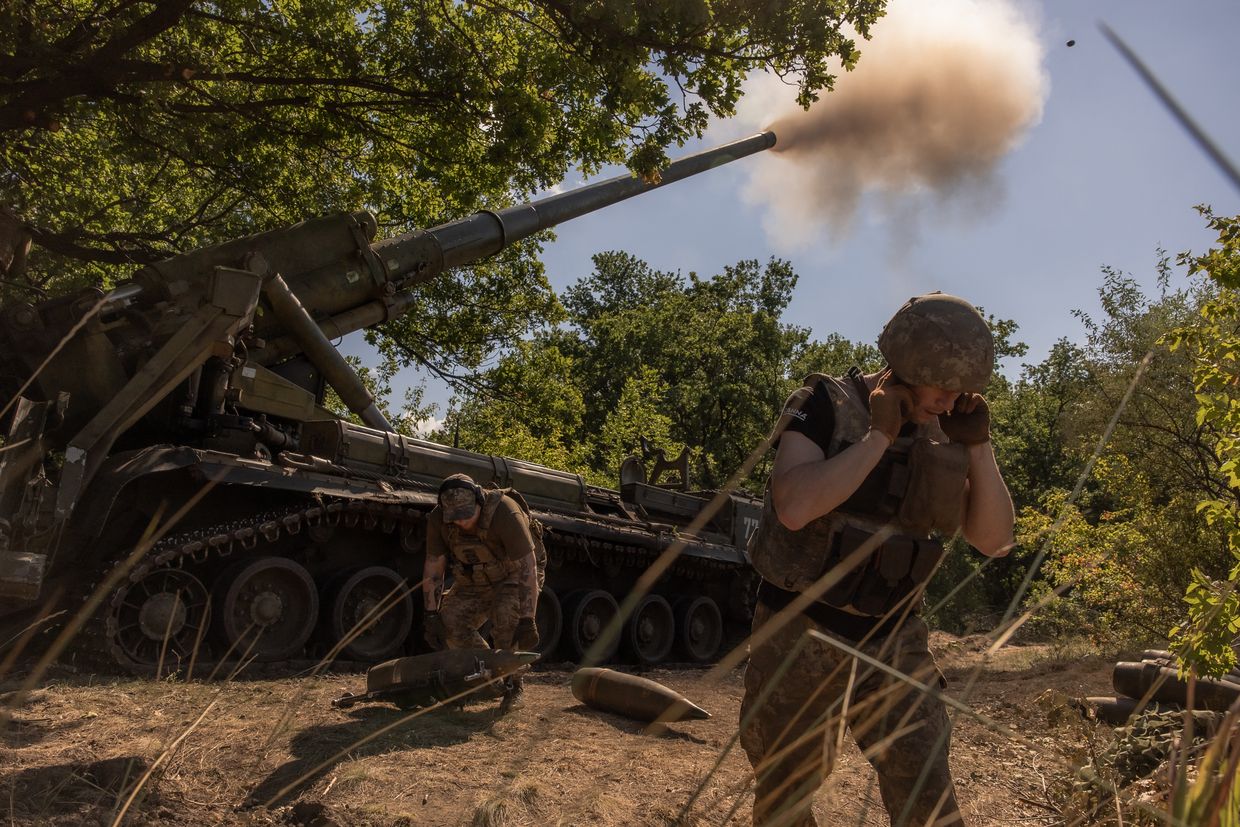
Danger south of Pokrovsk
As Russia grinds forward to build the southern flank of Pokrovsk, resembling a tactic formerly used to capture other Donbas cities, such as Avdiivka and Bakhmut, some analysts point out that a worrying scenario is unfolding above Krasnohorivka – nearly 40 kilometers south of Pokrovsk.
Ukrainian soldiers defending a pocket east of the Vovcha River and surrounded by Russian troops from the remaining three sides could be at risk of complete encirclement, according to the analysts.
Ukraine would likely be forced to withdraw from the pocket soon to avoid encirclement, which would allow Moscow to capture it “without much fighting,” Austrian warfare expert Tom Cooper said.
Cooper elaborated that Russia likely seeks to widen its southern flank to “at least 30 to 40 kilometers to keep the logistics out of the range of most of the Ukrainian artillery,” as a narrower flank would be more vulnerable to Ukrainian counterattacks.

Paroinen from Black Bird Group said the encirclement threat of the Ukrainian pocket east of the Vovcha River should not be serious as long as the retreat is timely. A delay would make it “very difficult” to get the trapped soldiers out of there, he added.
“But the pace that the Russians are advancing is still such that unless something like this (an unexpected accelerated Russian advance) is done, it should be possible to withdraw in time,” Paroinen said.
A full encirclement is unlikely because “there is always a way out,” including through local and field roads, according to Oleksandr Kovalenko, a Ukrainian military and political analyst with the Kyiv-based think tank Information Resistance. He said that there is an exit through the areas of the Zoriane village and the Lozova River on the lower part of the Ukrainian pocket, and the threat is not as serious when “you study the roads.”
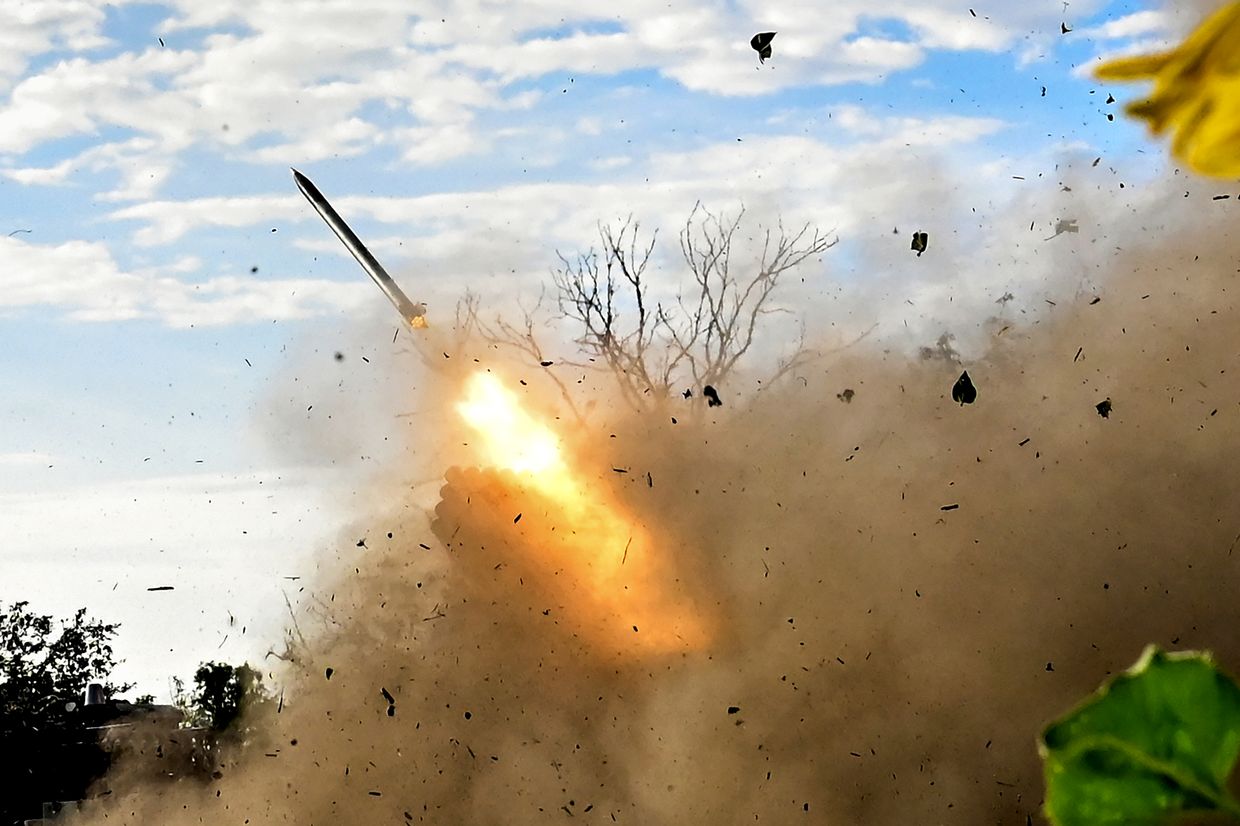
A blow to ‘fragile front’
Over the past weeks, Russian troops trampled over villages and towns to approach Pokrovsk at an alarming pace when compared to most of 2023-2024. Kyiv has not acknowledged how many settlements were captured by Russian troops since it launched the Kursk incursion in early August.
Worried about its more vulnerable southern flank of Pokrovsk, Russian troops began an offensive on Selydove, experts say.
“In order to continue the attack on Pokrovsk in this direction, they need to form flanks. And the southern flank is considered the most painful for (Russian troops),” Kovalenko said, elaborating that Moscow is likely not anticipating a Ukrainian counterattack on the northern flank due to its own offensive on the Toretsk front just above, and the southern flank is its biggest concern.
Russian troops are now trying to advance toward the Lozova River “to cover the entire south in order to completely cut off the dangerous zone for themselves, along which Ukrainian forces could flank their attack on Pokrovsk,” according to Kovalenko.
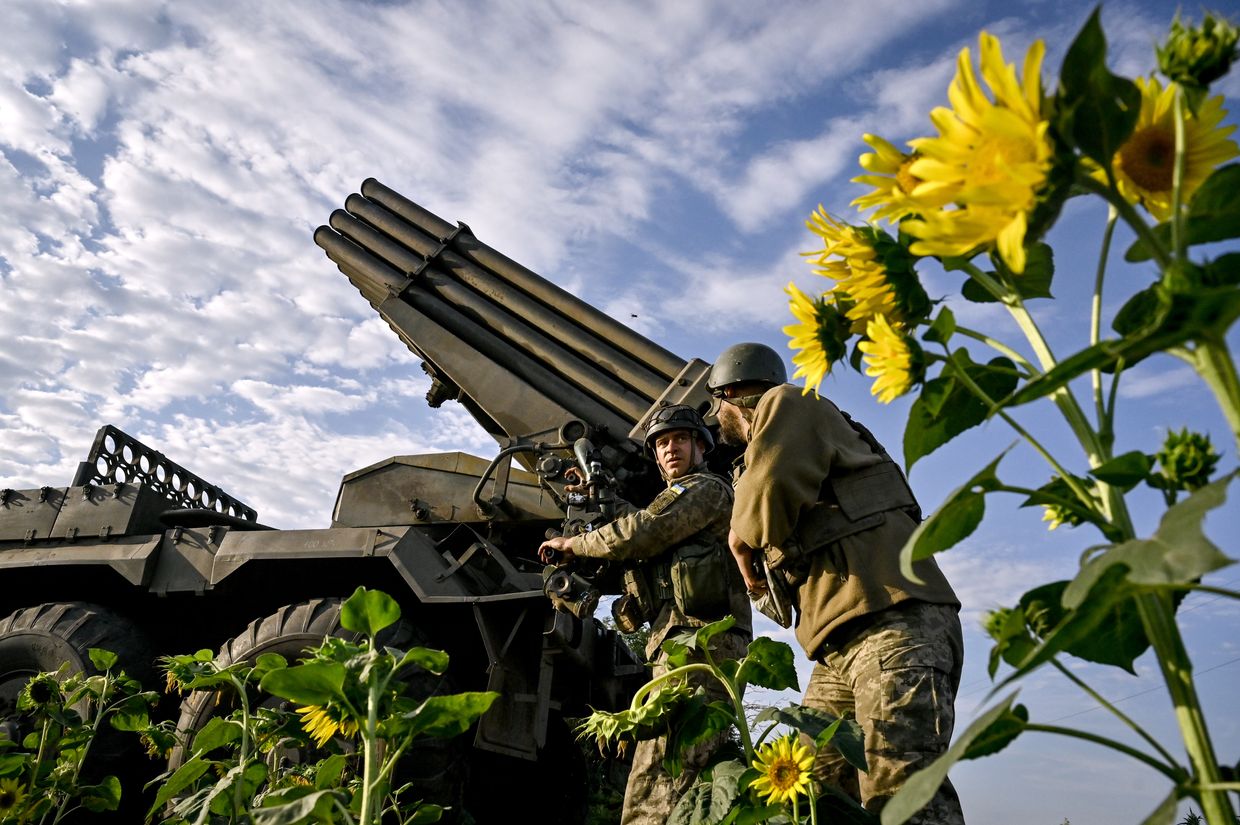
Russian troops in the area appear to be depleted in their resources: They have been advancing from the ruins of Avdiivka, captured in February, to the town of Novohrodivka – about 30 kilometers west of Avdiivka – for over six months, and likely need an operational pause, the expert believes.
“(In the near future), they will simply throw all their resources to the south (of Pokrovsk) without regrouping, without an operational pause, without restoring combat effectiveness,” Kovalenko said, explaining that Russia likely set a goal to capture Pokrovsk by the end of the year.
The goal is to make it as difficult as possible for Russian forces to advance further, but some of the Ukrainian withdrawals came as a surprise, according to Kovalenko. In some areas where Kyiv’s troops could have held the defense for several months, the Russians broke through “quite quickly,” due to the lack of organization on the brigade-level command that led to the poorly conducted rotation of units, he added.
Dmytro Zhmaylo, co-founder and executive director of the Ukrainian Security and Cooperation Center, a Kyiv-based think tank, said that even as Russian forces work on expanding the southern flank of Pokrovsk, they are keeping up with the push toward the city. This is “to prevent us from digging in and fortifying ourselves while (Russian troops) are fortifying the flanks,” he explained.
Moscow is expected to try to capture Selydove first before advancing toward Pokrovsk from the south using the Karlivka-Pokrovsk road, according to Zhmaylo.
Military experts have largely agreed that if Russians get to Pokrovsk, Ukraine would likely be able to hold the battle for the city for months, turning it into an “attritional warfare of manpower.” However, some experts are skeptical that Russians can even get to the city by the end of the year, considering that the fall muddy weather was due to arrive.
Kovalenko said that Russia’s inability to advance simultaneously in multiple directions – not just in the southern flank but also straight toward Pokrovsk and approaching north toward the T0504 highway – hints that Russia has “a limited resource, much more limited than, for example, at the end of May and beginning of June of this year.”
Paroinen from the Finnish Black Bird Group disagreed, saying that it appears to be “a good idea to try to focus on a single advance at a time or at maximum two.” He added that another reason why Russia may have chosen to focus on advancing south of Pokrovsk rather than storming straight toward the city may be that there is “a substantial Ukrainian defense” in front of it.
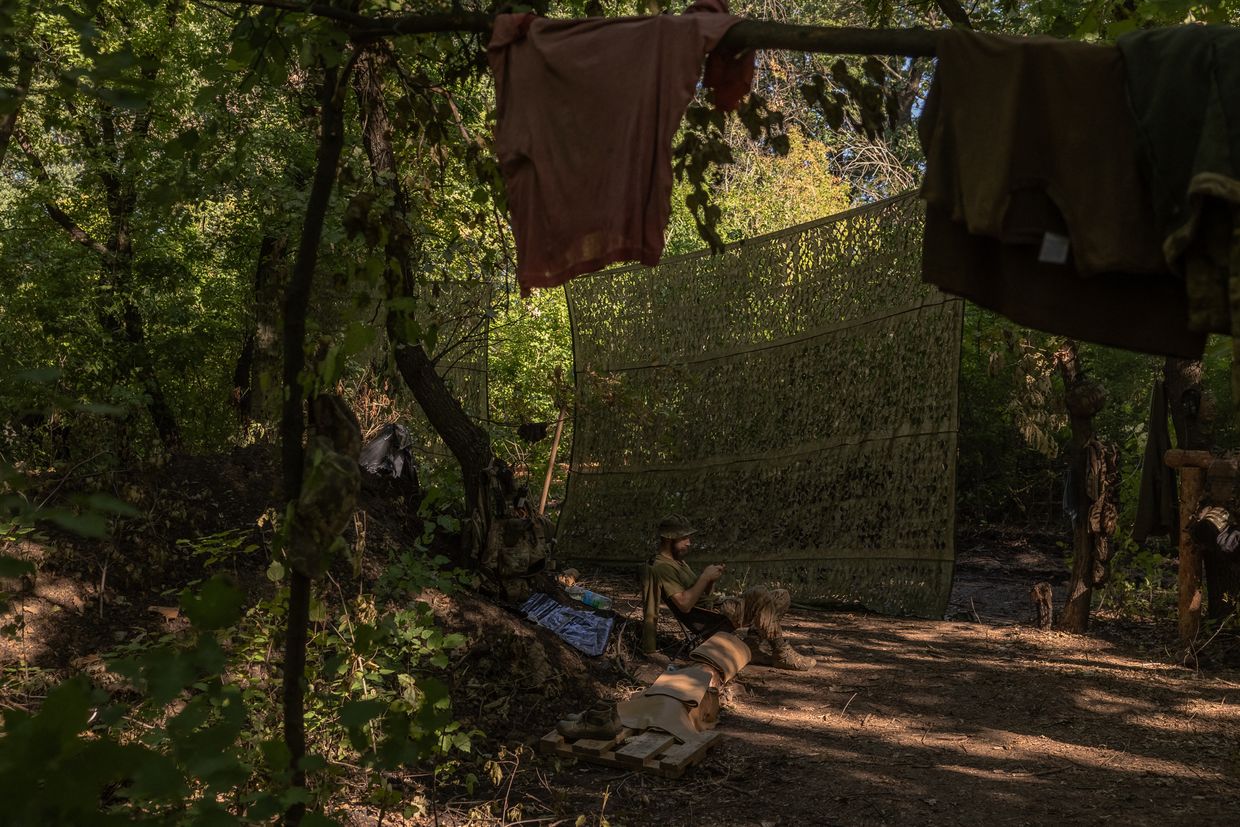
There is “a good opportunity” to outflank the Ukrainians from the south in the areas of the towns of Kurakhove, Ukrainsk and Vuhledar, where there may be more chance because the territory appears to be less fortified, according to Paroinen.
The analyst warned that the Russian advance in the Pokrovsk area is “very critical” because the pace is “very steady,” even if, when zoomed out of the map, “we are still talking about quite limited areas.”
While admitting that Ukraine’s Kursk incursion “may not be a complete waste of men and material,” Paroinen said the timing of the bold operation is “very questionable” – especially when a key part of the eastern front was deteriorating.
The launch of the boldest-ever cross-border incursion into Russia appears to have come at a cost to other hot spots of the war, from where Ukraine had drawn battalions to conduct the high-stakes operation. U.S.-based military experts Michael Kofman and Rob Lee agreed in their recent Foreign Affairs piece that “the offensive, in other words, weakens Ukraine’s already shaky front,” estimating that “perhaps 10,000 to 15,000 soldiers in total,” including some of Ukraine’s better troops, have taken part in it.
Paroinen said the speed at which the Ukrainian defense could be penetrated by the grinding Russian advance would signal the severity of the situation.
“If it falls quickly, then it really tells us the situation is very bad,” Paroinen said. “I would be more like watching how quickly, how quickly things unfold and drawing some conclusions from there – how bad the situation is.”
______________________________________________________
Note from the author:
Hi, this is Asami Terajima, the author of this article. Thank you for reading our story.
It's been an extremely rough Summer for the Ukrainian soldiers. While the Kursk incursion may have uplifted the otherwise hopeless mood that I felt the last time I was in the Donbas, the situation surrounding Pokrovsk is ever more critical.
To help the Kyiv Independent tell more stories that would otherwise not be told, please consider supporting us by becoming our member.













